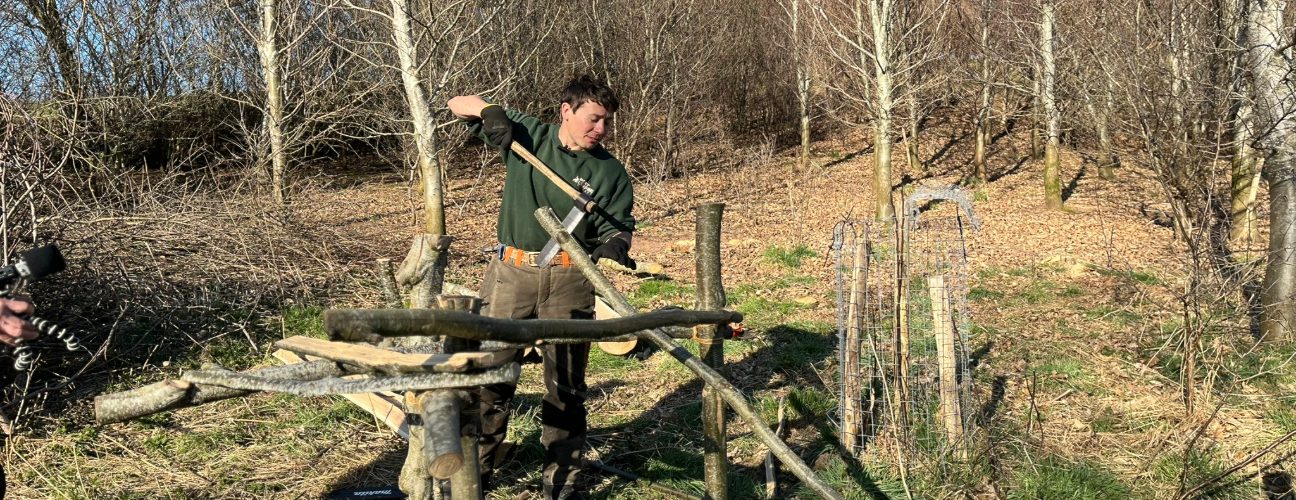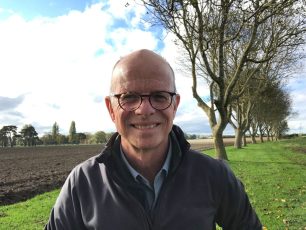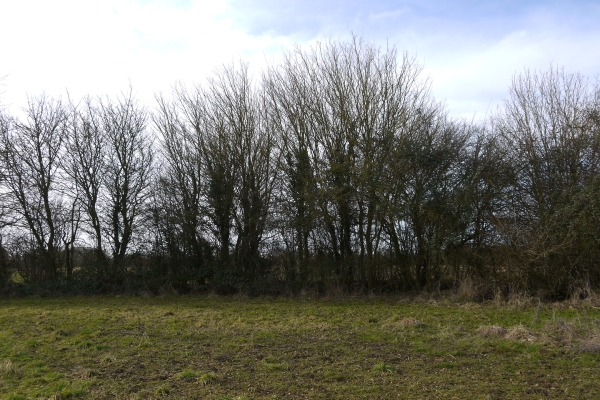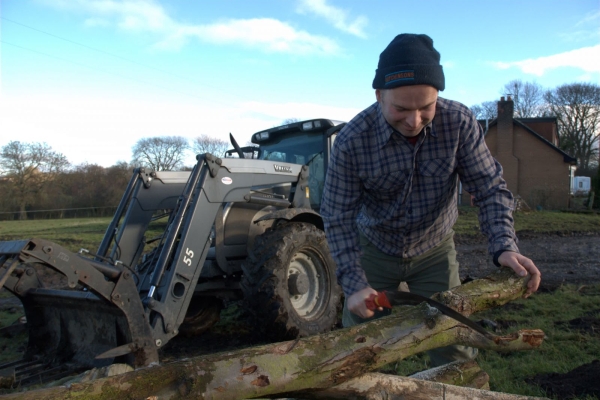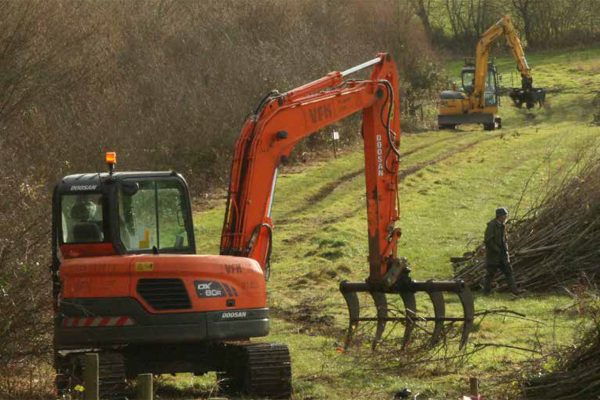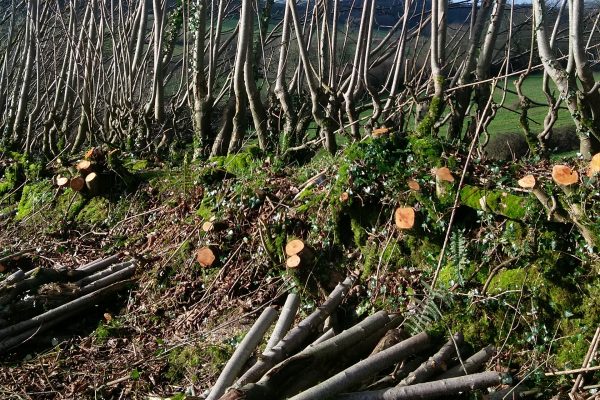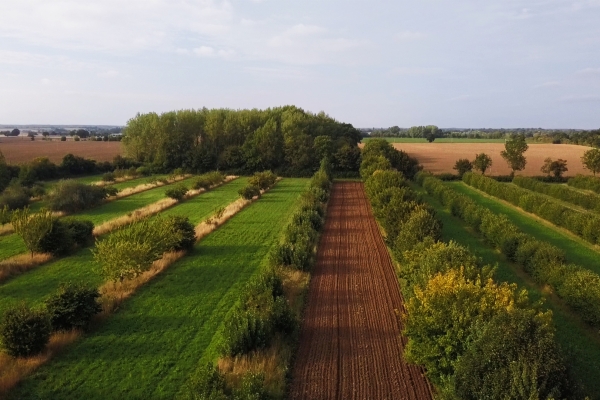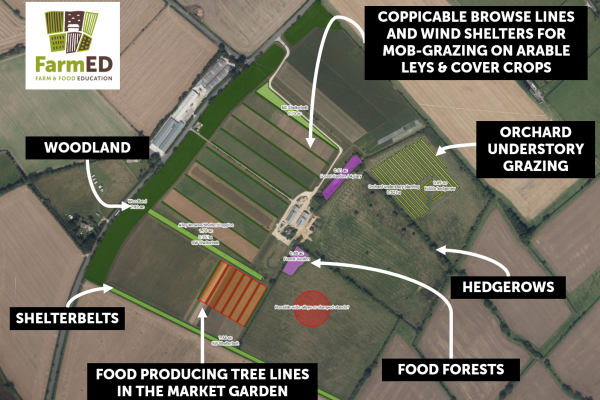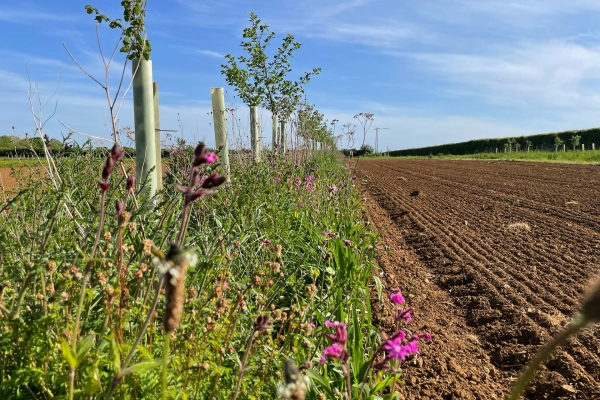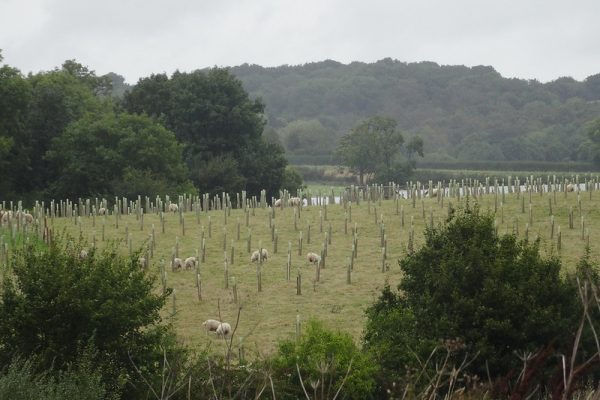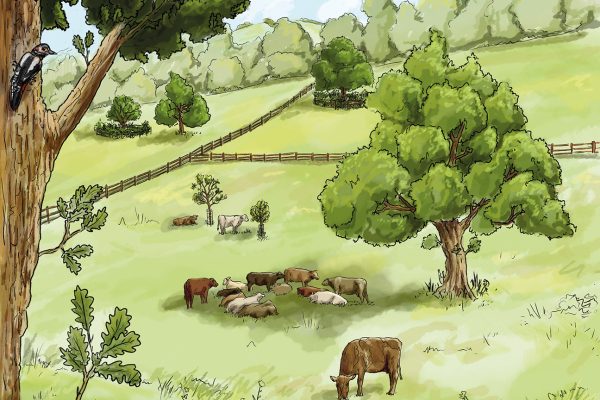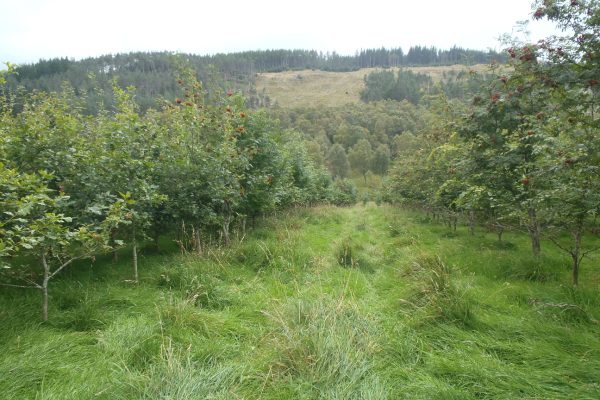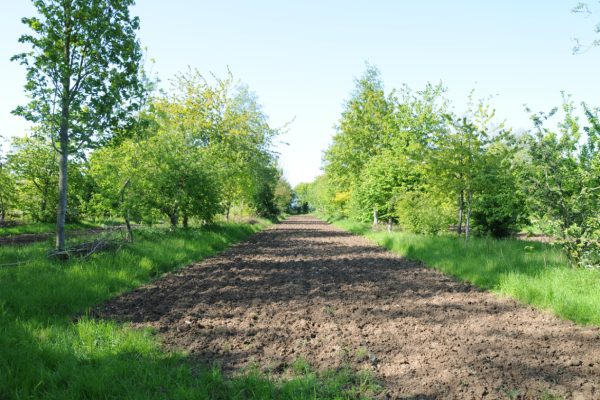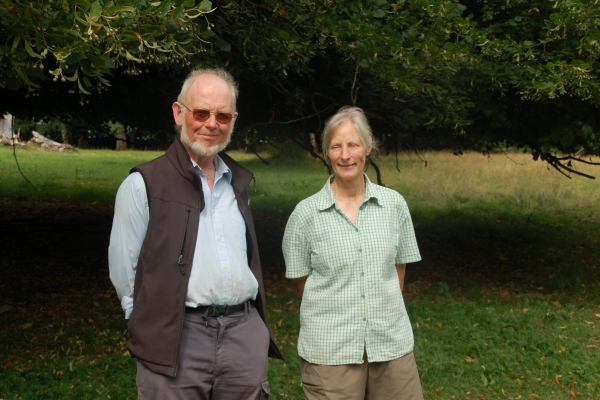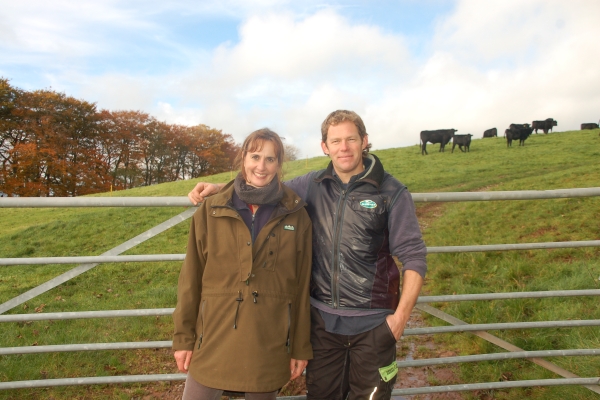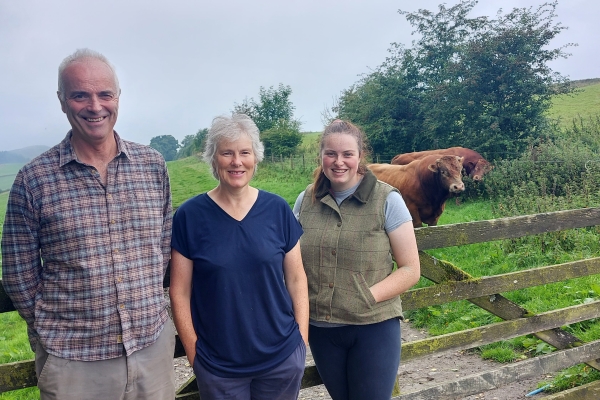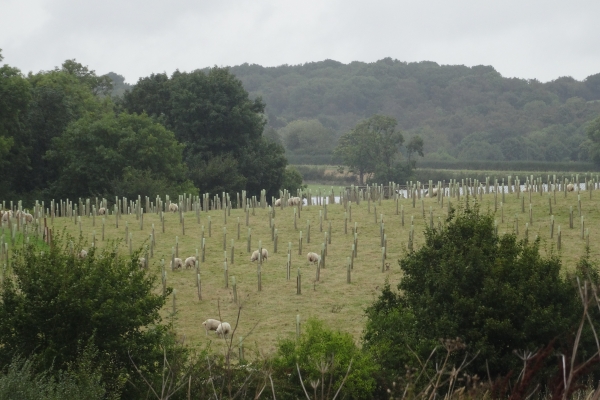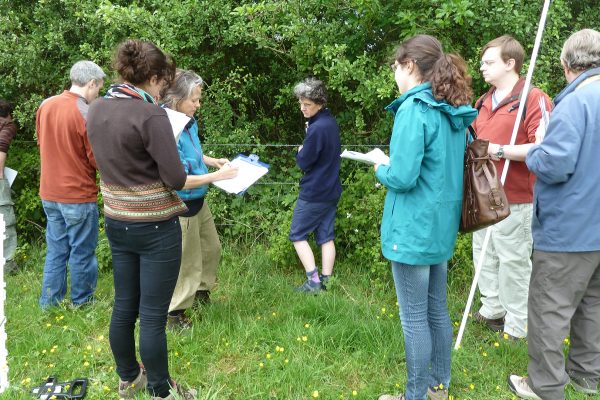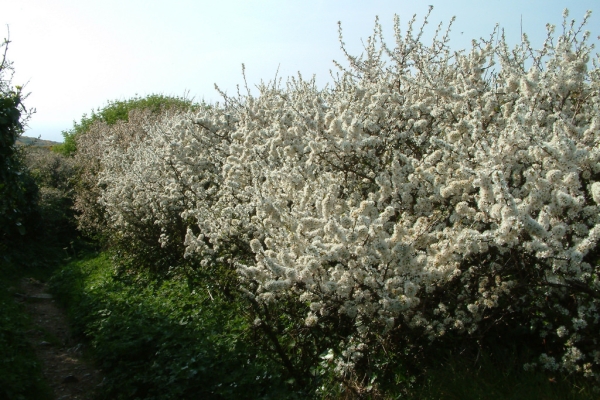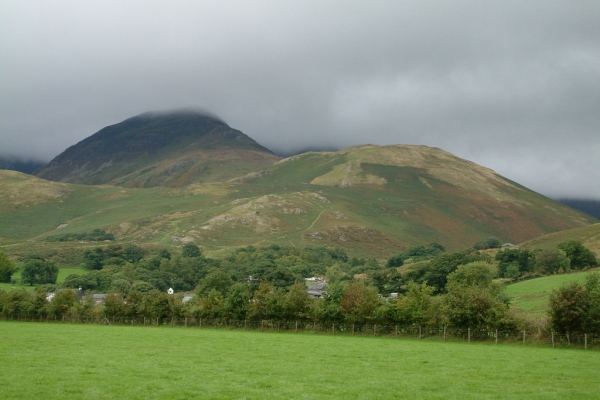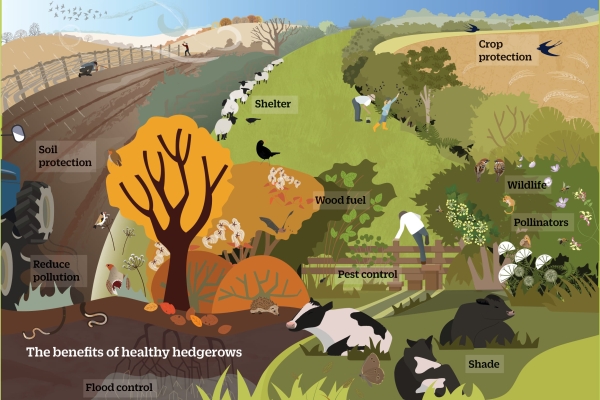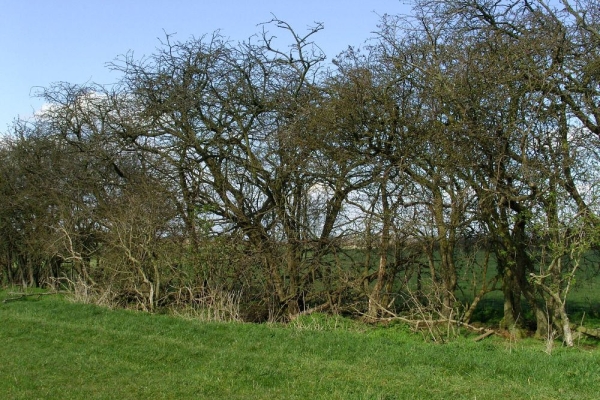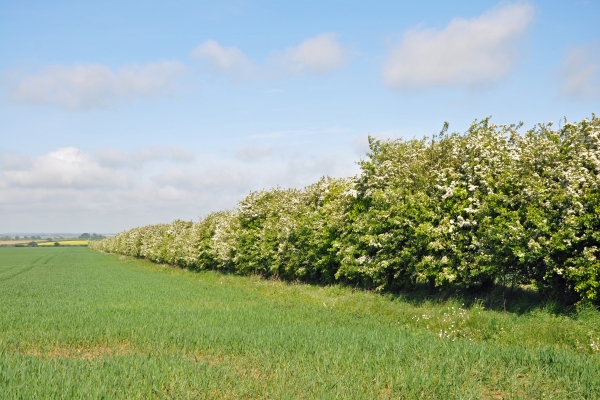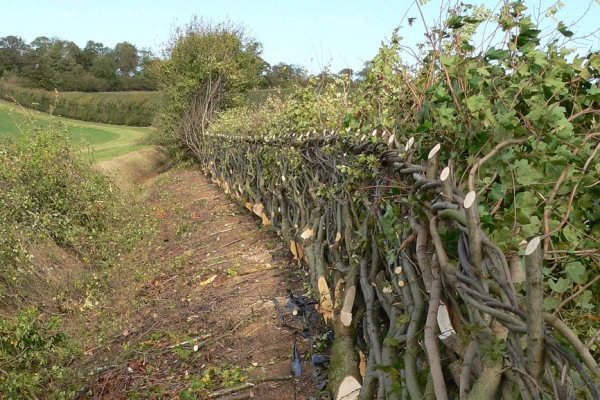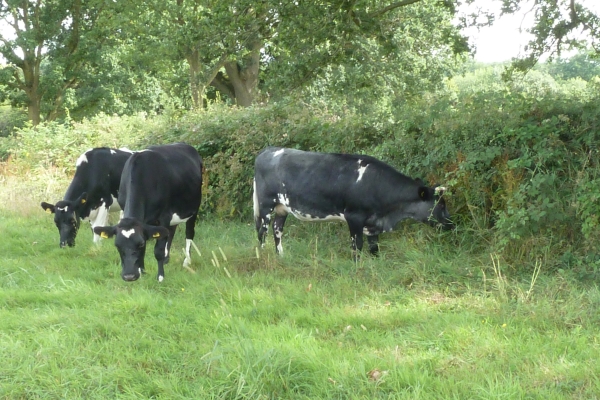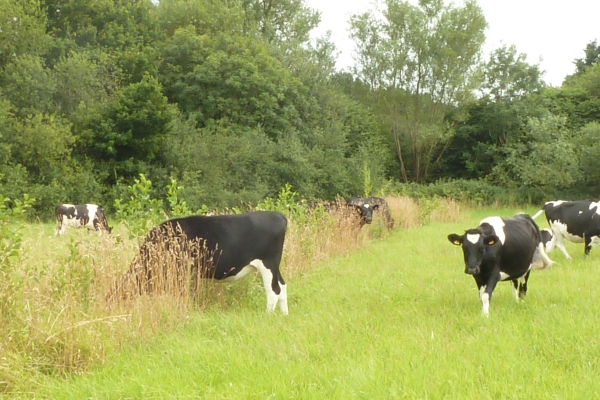Coppicing and Wood Pasture – Learnings from the Field with the ReForest Living Lab
Myself along with other Organic Research Centre (ORC) staff including Agricology’s Content Editor Janie Caldbeck work on the Horizon-Europe funded project ReForest which aims to promote agroforestry as a land use type allowing food production whilst maintaining ecological sustainability. Those involved in the project are building on existing knowledge of temperate agroforestry systems to co-create solutions to key barriers that hinder the wider adoption of this land use type by farmers across Europe, with a particular focus on the value of carbon and biodiversity in farming business models. The ORC are co-ordinating the ReForest North of England Living Lab, which focuses on the benefits and challenges of agroforestry and sharing knowledge between practitioners and other stakeholders in an open and constructive way, alongside being a forum in which to inform the development of decision-making tools.
On March 18th 2025, we held a coppicing workshop at Sleastonhow Farm in Cumbria, which included a farm walk and an opportunity to see and discuss wood pasture, hedgerow and woodland management. It yielded some interesting observations and discussions…
The day began with everyone introducing themselves and giving a reason for coming. Those reasons were broadly:
- Generally interested to learn more about coppicing
- Interested to learn more about coppicing for their own business
- Wanting to learn more about coppicing so that they can advise others
- Interested in the business model of coppicing
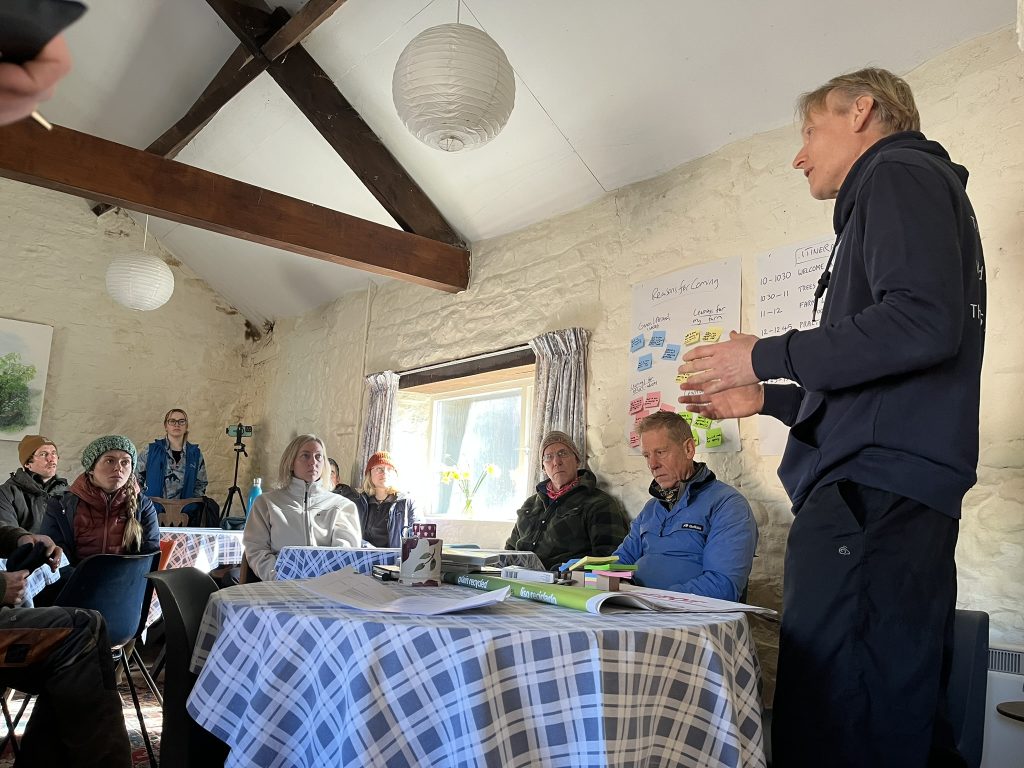
Tim Nicholson gave a brief overview of the history of the farm that has been in his family since its purchase by his grandfather in the 1950s (see above). It had gone through an evolution that included phases in mostly arable production with high inputs and serving as a key venue for dairy cattle auctions. Since Tim took over management it has been on a more regenerative trajectory in which trees have been an essential part. The farm is now based around a beef cattle enterprise with longhorn and belted galloway breeds, and providing a venue for the regenerative farming conference Carbon Calling. It is also the base for Tim’s Cactus Tree Guards business.
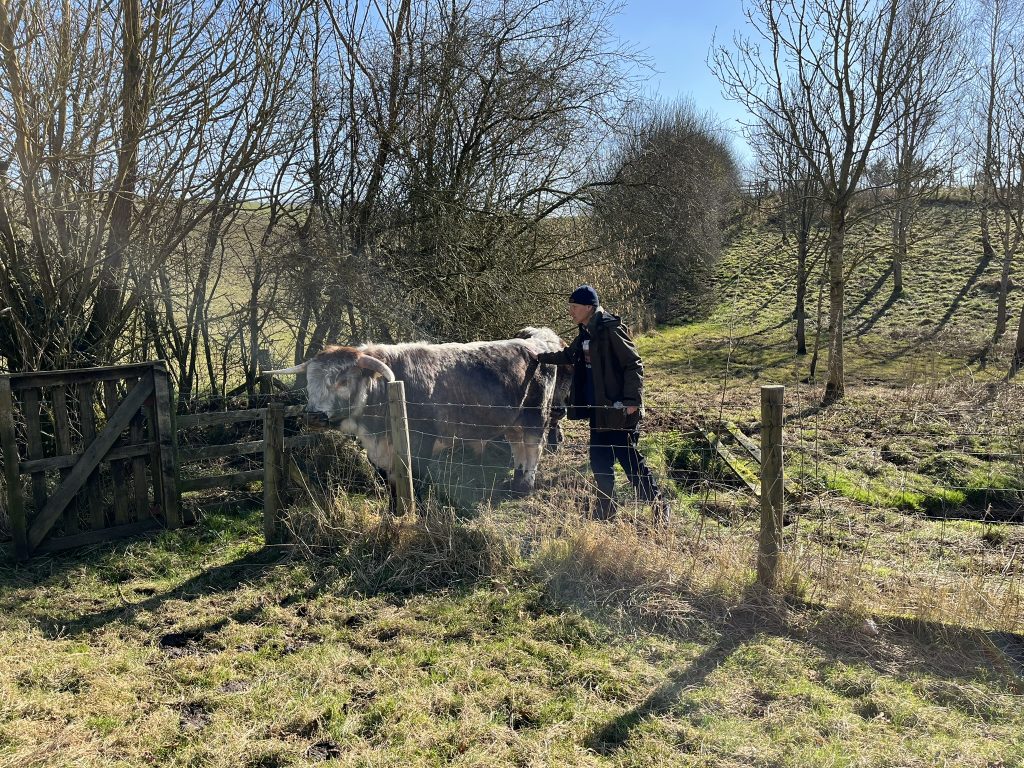
Tim took the group on a walking tour of part of the farm, stopping to see different areas where trees had been integrated into the system, including:
- A new wood pasture created under a Countryside Stewardship (CS) option, consisting of broadleaved trees (e.g. oak, lime, rowan, sweet and horse chestnut), each tree planted with a couple of companion shrubs (e.g. hawthorns) within a double cactus tree guard (see below), which will be removed after about 10 years. These trees were mostly in lines, but within the field there were also denser stands of planted shrubs. It was noted how, from a carbon perspective, cactus guards are only a sustainable option at relatively low planting densities and when they are reused a number of times.
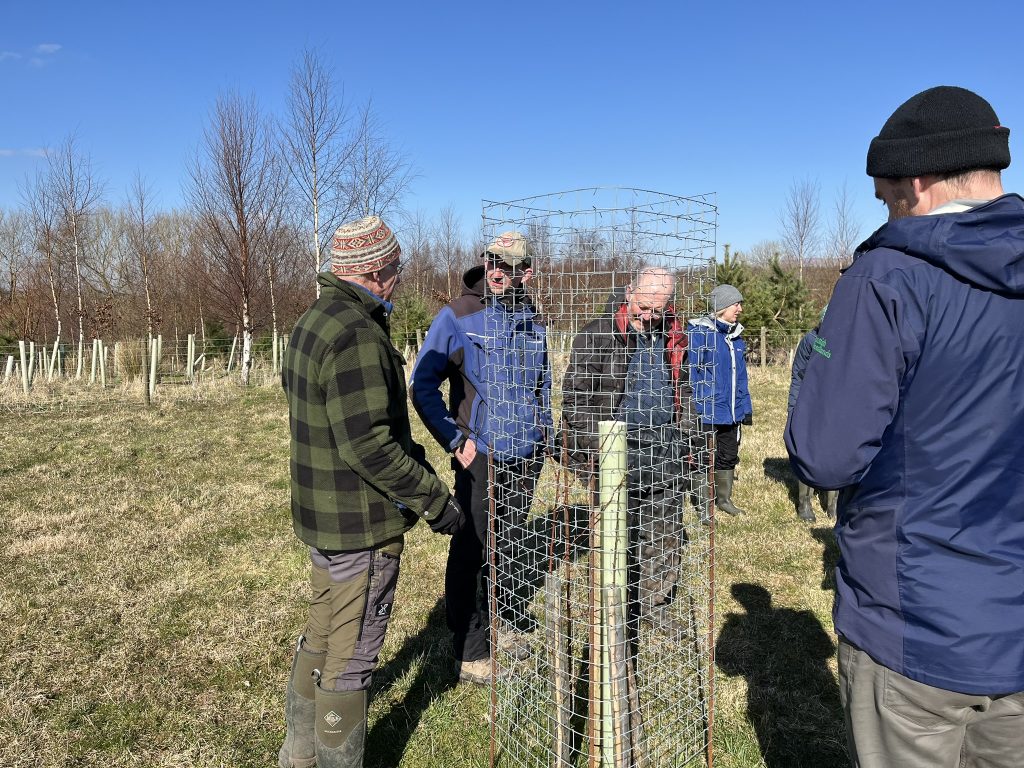
- A nearby strip of woodland planted in 2012 and opened up to grazing. A couple of longhorn bulls were in evidence using this area including for rubbing (body care). The damage to some of the more vulnerable trees was not considered a problem, as it creates more structural diversity and therefore biodiversity. We discussed the nutritional properties of tree browse and the potential role that the tannin-rich browse provides, helping the animal moderate the phytotoxins taken in from species-rich pasture.
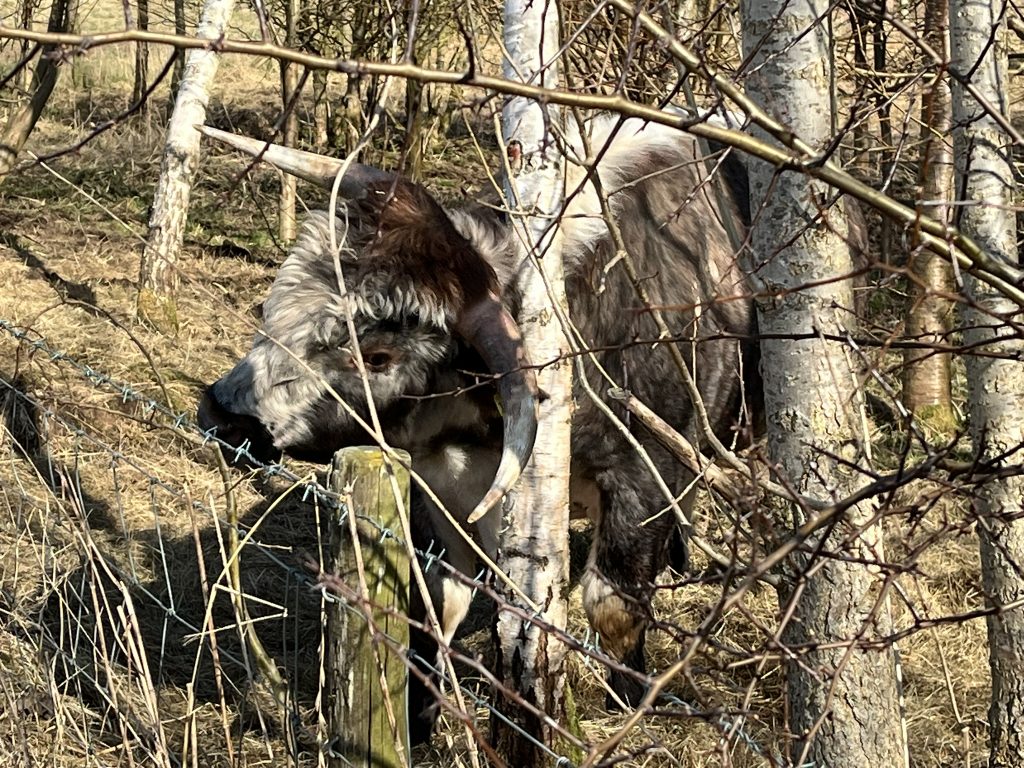
- A hedge that had been laid and gapped up, approximately 4-6 m wide and with a gap between it and adjacent fencing to allow laying of the hedge without fence removal.
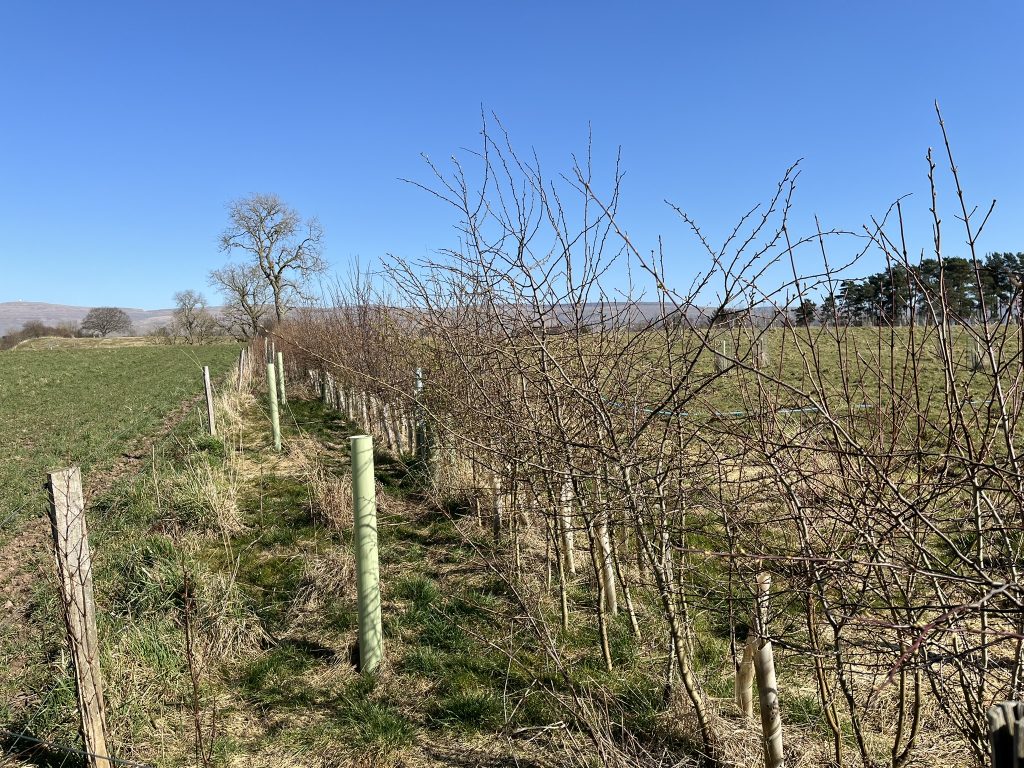
This makes it more possible to follow a laying rotation independent of the cycle of fence replacement needs. Brash from laying is used in the farm’s biomass boiler which serves two houses. Tim is planning to obtain two kilns to make biochar for soil improvement.
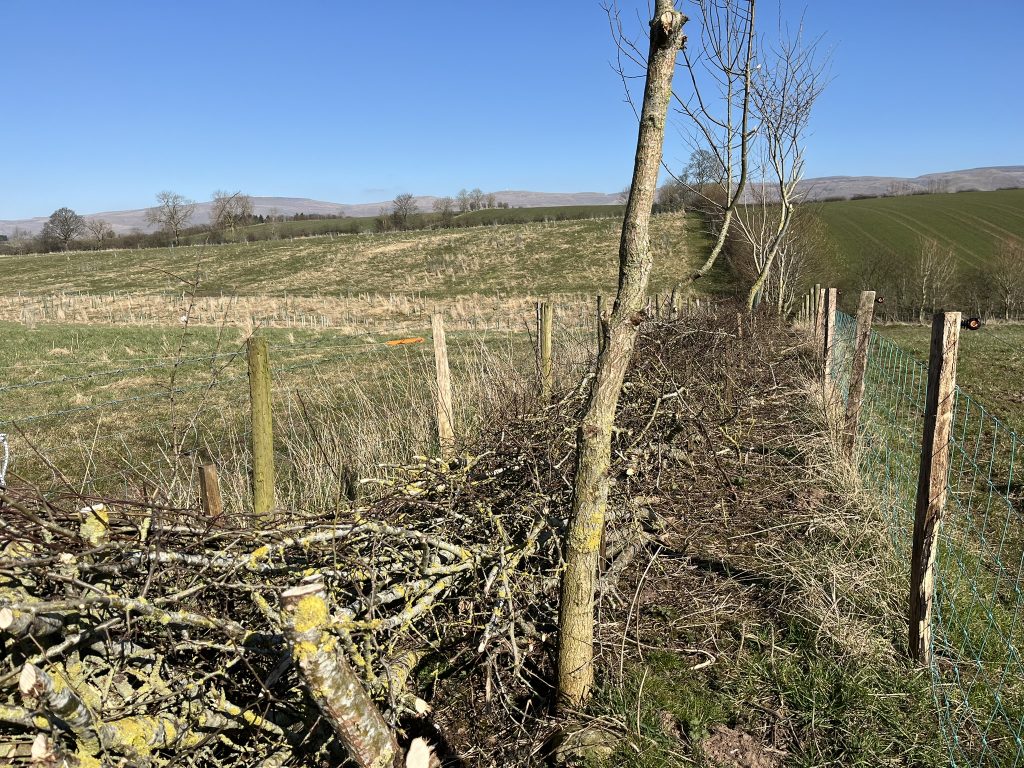
- An area of woodland planted under Higher Level Stewardship (HLS). It is currently fenced but is ready to open to cattle. It is now within an area being taken forward under a new scheme as wood pasture. Some 800 ash trees were removed from the woodland by order due to ash dieback disease and have been replaced with trees that are growing up somewhat suppressed under the shade of the earlier planting.
- Another wood pasture area with a more natural scattering of broadleaves (again mixed with shrubs within cactus guard protection) and with a Cumbria wildflower seed mix sown into the matrix of pasture. There was some discussion about the quality of the seed and apparent presence of some non-native red clover which will therefore not persist as well. A roundel of trees had been planted in one position commanding good views, with the vision for cattle to use it as shelter in due course. One area of the field had been planted with a mix of apples varieties (e.g. James Grieve, Discovery). These were planted together to aid fruit harvesting, but we discussed the value of apples (crab apples as well as domestic ones) incorporated into the hedgerows for wildlife i.e. birds such as fieldfares.
The group viewed an area of coppiced sycamore; its wood makes good firewood but, with its anti-bacterial properties, it also can provide useful products for the kitchen.
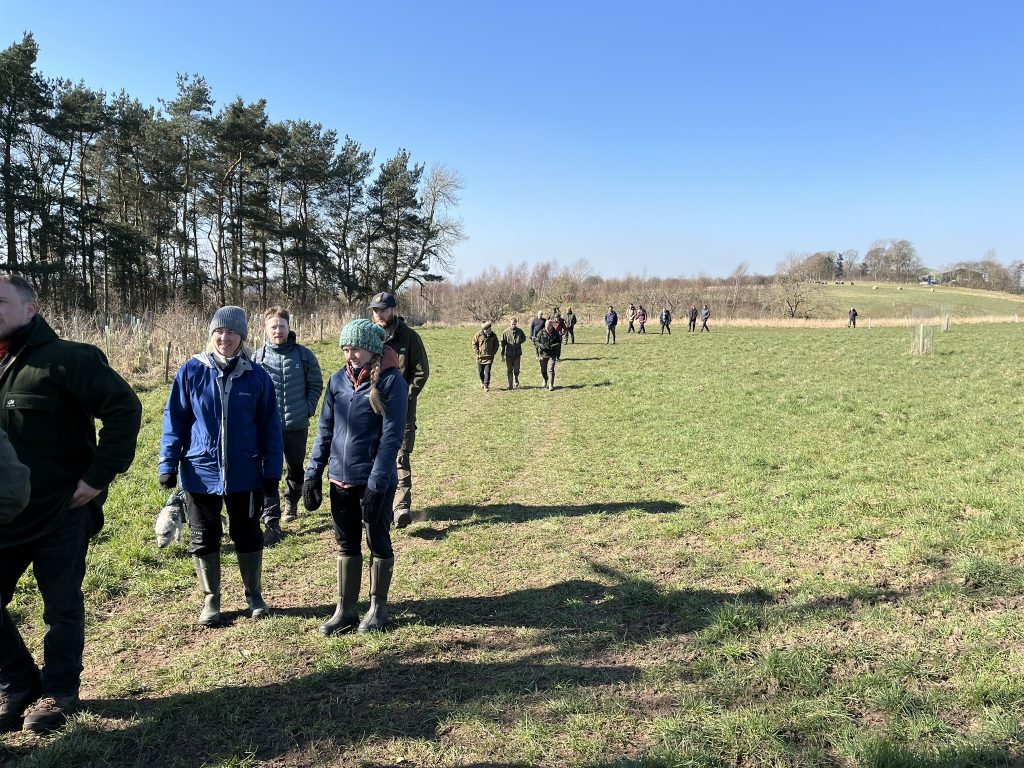
A fallen silver birch tree was an example of the importance of deadwood for the ecology of the farm, and another area showed the strong suckering ability of aspen.
A herd of belted galloways are rotated between paddocks with supplementary feeding of hay, with one bale rolled out each day. Species-rich hay is preferred. The long-term aim is for each paddock to have some scattered trees to provide shelter.
The question was asked about the economic case of what the group had been seeing. For Tim, the main objective is land restoration. Whilst there is currently a high market price for the beef (at point of sale to the abattoir), he doesn’t know if the economics stack up, though this will be an important question for most farmers.
In the afternoon we had a practical demonstration of sweet chestnut coppice work by Lee Bassett. Some years ago Tim had experimentally planted an area with sweet chestnut (see below) and the maiden trees were now ready for the first cutting.
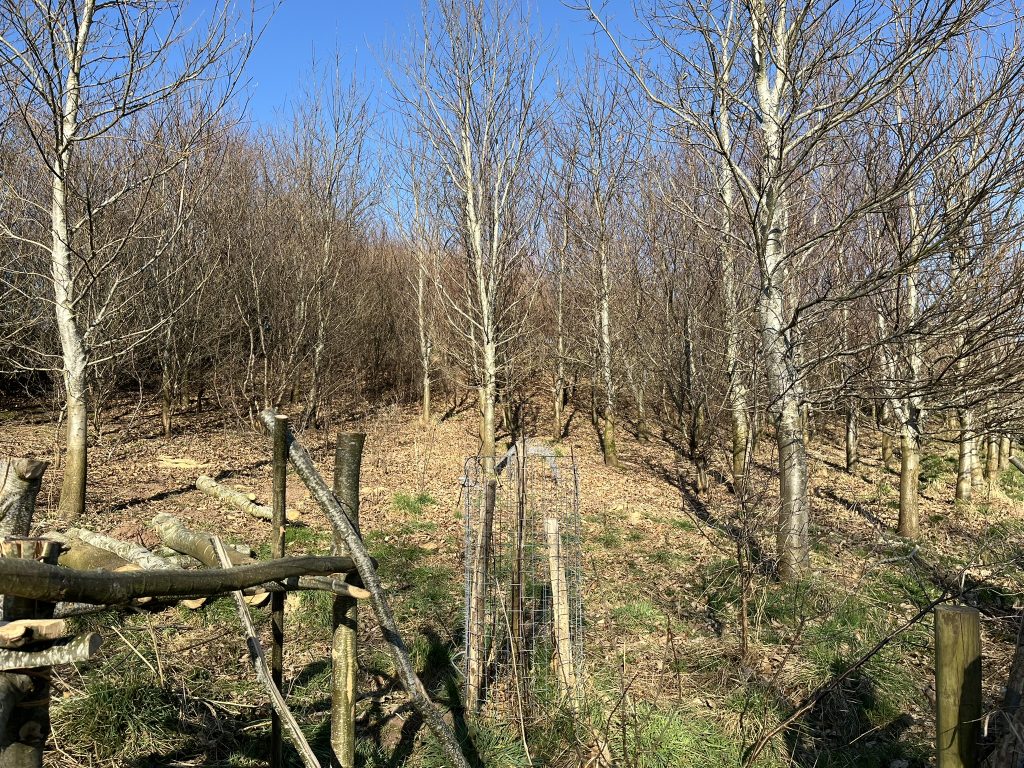
The timber has a high heartwood/sapwood ratio which gives them good durable properties as fence posts, significantly outlasting treated softwood posts. (It was noted that the season of harvesting is important, winter being far better than summer when sap in the wood reduces its durability considerably.) There is a lot of sweet chestnut coppice in the south but not the north. Was this a cultural difference rather than one of climatic suitability? Tim’s trees were certainly doing well. There was some discussion around sourcing of trees and varieties, given than the sweet chestnut is mostly grown for nuts in France. Local sweet chestnuts tend to give fewer nuts of size suitable for eating, although one local site giving good nuts was given as an example.
The trees were well spaced and could probably have been densified, which would have supported even straighter growth and therefore timber quality. This could also have been improved with pruning to remove side branches, reducing the number of knots.
With the coppicing of maiden trees, the regrowth won’t be as strong as that from well-established stools (with their strong rooting systems), which Lee is more used to in the south of the country. An interesting difference between the regions is how in the south the regrowth is not nibbled by deer, whereas in Cumbria it is. Protection can be afforded by piling brash over the stool, temporarily placing a guard over it, or fencing the area with double height rolls of mesh. (There are CS grants for temporary deer fencing.) Regrowth consists of a large number of stems which naturally thin to leave a few strong ones that mature.
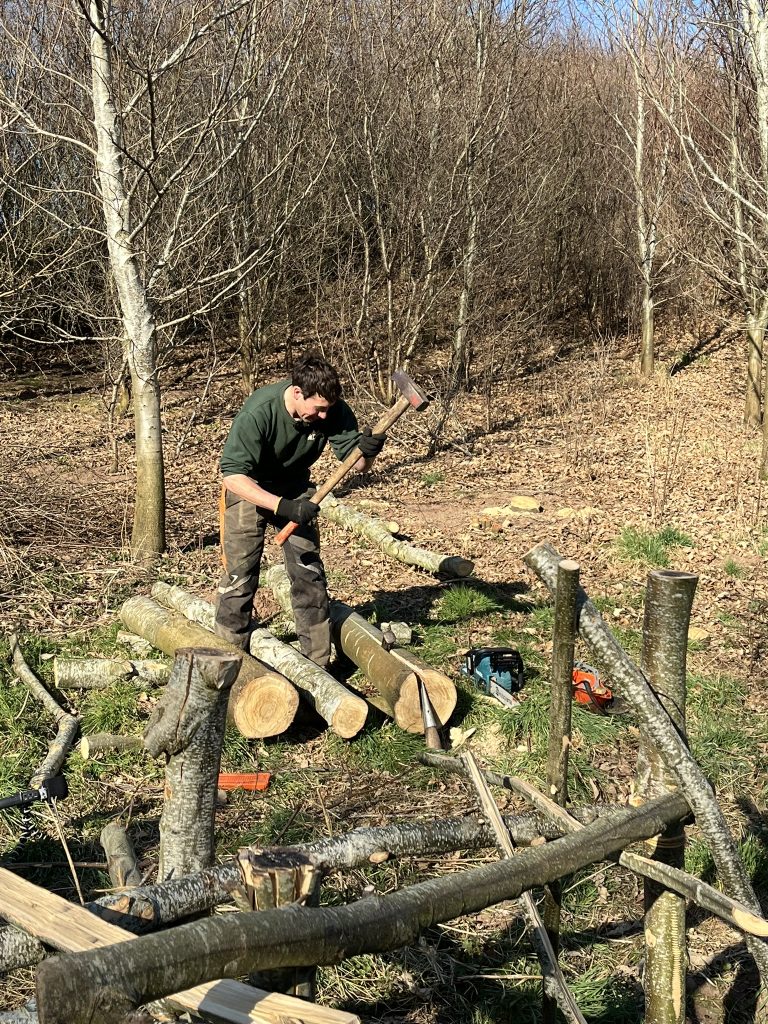
Lee (pictured above and in header image) gave a practical demonstration of cleaving and splitting using hand tools and craft-based approaches. The coppiced wood can give rise to a range of fencing materials: strainers (stems of 5- or 6-feet length split half-ways), intermediates (split quarter) as well as rails and pales, and stakes for hedge laying. Whilst there are some higher end products such as roof shingles, fencing materials represent a good middle ground of on-farm addition of value to a base product of firewood. For a farmer, investing in chestnut coppice for long-term production of materials for future fencing needs to make sound economic sense.
Interested in joining the living lab network? Join the mailing list here.
All photos taken by Will Simonson
